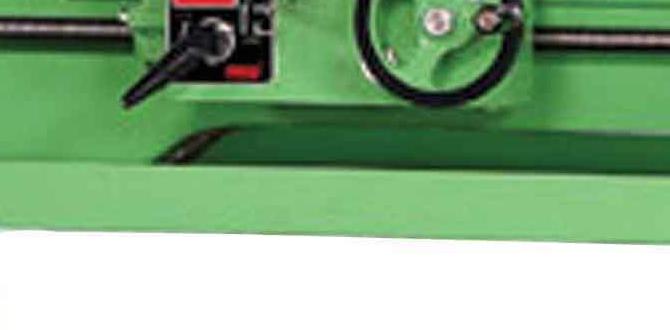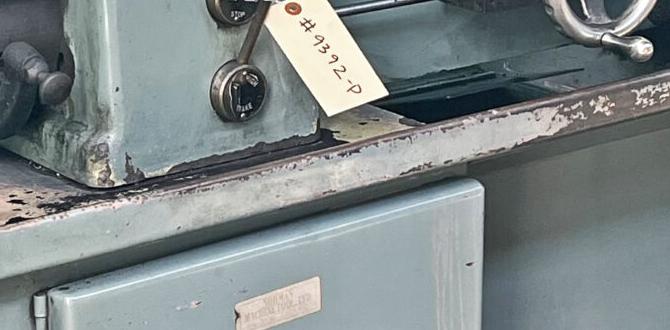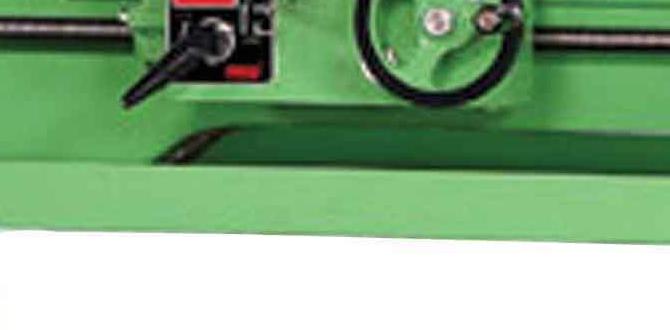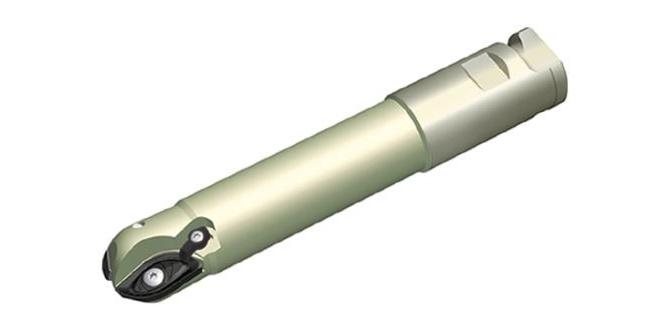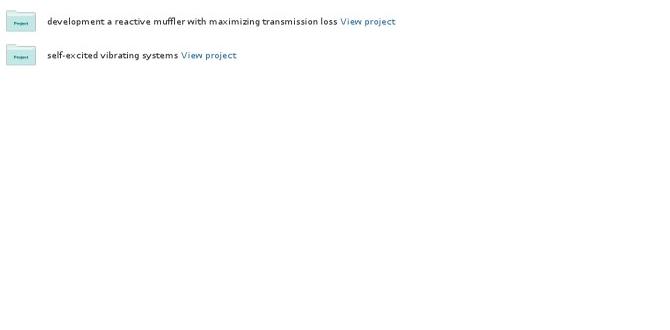Quick Summary:
Setting up a wood lathe tool sharpening jig is straightforward and crucial for clean cuts and less effort. This guide simplifies the process, ensuring your chisels and gouges are always razor-sharp for perfect woodworking.
Welcome to Lathe Hub! If you’ve ever struggled with dull wood lathe tools leaving ragged edges or making your cuts feel like hard work, you’re in the right place. Getting your tools sharp is perhaps the most critical part of woodturning, and a good sharpening jig makes this job so much easier and more consistent. Many beginners find tool sharpening a bit intimidating, but with the right setup, it’s actually quite manageable. Today, we’ll walk through selecting and setting up an essential sharpening jig for your wood lathe. By the end of this guide, you’ll have the confidence and knowledge to keep your tools in top cutting form.
Why a Sharpening Jig is Your Wood Lathe’s Best Friend
Think of your wood lathe tools like a chef’s knives. A dull knife is frustrating and dangerous, and the same goes for your turning tools. Sharp tools glide through wood, creating smooth surfaces and allowing for intricate details. Dull tools, on the other hand, require more force, can catch unexpectedly, and often leave a rough, splintered finish. This not only ruins your workpiece but can also be dangerous, leading to kickbacks or slips.
A sharpening jig takes the guesswork out of maintaining the correct bevel angle on your chisels and gouges. Instead of trying to hold a tool at a precise angle against a grinding wheel or sharpening stone freehand (which is incredibly difficult for beginners and even seasoned woodturners), a jig holds the tool securely and guides it at a consistent, repeatable angle. This ensures that each time you sharpen, you’re getting the same effective cutting edge.
Understanding Sharpening Basics for Wood Lathe Tools
Before we dive into jig setup, let’s quickly touch on what makes a woodturning tool sharp. The cutting edge is formed by a specific bevel angle. The angle you choose depends on the type of tool and the wood you’re working with.
- Scrapers: Typically have a very fine burr on a nearly 90-degree angle.
- Skew Chisels: Require a specific bevel angle, often around 30-45 degrees, depending on the task.
- Gouges (Spindle, Bowl, Carving): These are the most common and have various bevel angles depending on their design and intended use. For example, a spindle gouge might be sharpened at 30-40 degrees, while a bowl gouge often has a more swept-back grind, sometimes around 50-60 degrees, which aids in shearing cuts.
The jig’s job is to help you consistently achieve and maintain these angles. You’ll be sharpening using either a grinding wheel (often silicon carbide for durability on wood tools) or sharpening stones. Many jigs are designed to work with common bench grinders found in most workshops.
Types of Wood Lathe Sharpening Jigs
There are several popular types of sharpening jigs available, each with its own advantages. For beginners, simplicity and versatility are key. The most common and recommended jigs for general-purpose wood lathe tool sharpening include:
1. The Universal Sharpening System (e.g., Wolverine Grinding Jigs)
These are arguably the most popular and versatile jigs for woodturners. They typically consist of a base that registers against the grinder rest and an adjustable arm that holds the tool. The tool is mounted in a V-shaped or adjustable clamp, and you can set the angle by adjusting the height or position of the arm.
- Pros: Highly versatile, can sharpen most types of gouges and chisels, provides consistent angles, relatively easy to learn.
- Cons: Can be a bit more expensive than simpler jigs, there’s a learning curve to mastering all its adjustments.
2. The Simple Angle Jig
As the name suggests, these are more basic jigs. They might be a fixed-angle block with a slot for the tool, or a simple adjustable jig where you set the angle by sliding a part. Some are designed for specific tools like bowl gouges.
- Pros: Often more affordable, very straightforward to use for specific tools.
- Cons: Less versatile, may not accommodate all tool types or bevels as effectively as universal systems.
3. The Stripper (for parting tools, scrapers)
While not a jig in the same sense as those for gouges, tools like the “Stripper” are designed for sharpening scrapers and parting tools. They often involve a support that holds the tool edge against a sharpening stone or wheel at a consistent angle for applying a small burr.
- Pros: Excellent for specific tool types, creates effective burrs on scrapers.
- Cons: Only suitable for specific tools, not for beveling gouges or chisels.
4. Grinding Wheel Honing Guides
Some woodturners use specialized grinding wheels designed for tool sharpening. These often have built-in features or accompanying jigs that simplify angle setting. However, most beginners start with a standard bench grinder and a jig.
For the purpose of this guide, we will focus on setting up a versatile universal sharpening system, as it offers the best balance of capability and ease of use for a beginner.
Choosing Your Sharpening Setup: Grinder and Jig Compatibility
Before you can set up your jig, you need a grinding setup. Most woodworkers use standard bench grinders. For wood lathe tools, it’s highly recommended to use wheels that are suited for sharpening high-speed steel (HSS), which is what most woodturning tools are made of.
Recommended Grinding Wheels:
- Silicon Carbide Wheels: These are excellent for HSS. They are harder and wear slower than aluminum oxide wheels, and they can handle the heat generated without “glazing” (getting shiny and ineffective). Many woodturners prefer these for their durability and cutting performance on wood tools.
- Grit: A medium grit (around 60-80) is good for establishing the bevel, and a finer grit (around 120-240) can be used for a smoother finish. Some setups use a combination, like a medium grit wheel on one side and a fine grit on the other.
Jig Compatibility:
Most universal jigs are designed to work with standard 6-inch or 8-inch bench grinders. The jig’s base usually sits on the grinder’s tool rest. Ensure that your chosen jig’s base will fit comfortably and securely on your grinder’s rest. Many jigs have adjustable bases to accommodate different grinder models.
Essential Tools and Materials for Setup
Here’s what you’ll need to get your sharpening jig set up and ready to go:
- Your wood lathe sharpening jig (we’ll assume a universal type for this guide)
- A bench grinder with appropriate wheels for HSS
- Your wood lathe tools that need sharpening (gouge, chisel, etc.)
- Safety glasses (absolutely essential!)
- Hearing protection
- Dust mask or respirator
- A soft cloth or brush for cleaning
- A damp cloth or spray bottle (optional, for cooling)
- Fine-grit sharpening stones or diamond plates (for secondary honing after grinding)
- A leather strop and honing compound (for final polishing and creating a burr)
Step-by-Step: Setting Up Your Universal Sharpening Jig
Let’s get your jig ready. We’ll break this down into manageable steps.
Step 1: Mount the Grinding Wheels Correctly
Ensure your grinder has the right wheels. For wood tools, silicon carbide wheels are a great choice. If you’re using a new wheel, make sure it’s securely mounted. If you’re using a standard grinder with two wheels, one can be a medium grit for rough shaping and the other a finer grit for refining edges.
Step 2: Position the Grinder Tool Rests
Most grinders come with adjustable tool rests. For sharpening, you want these rests positioned quite close to the grinding wheel, typically no more than 1/8 inch away. This prevents the tool from slipping into the gap. Make sure the rests are firm and don’t wobble. You’ll usually adjust these rests to support the jig’s base.
Step 3: Secure the Sharpening Jig Base
Place the base of your sharpening jig onto the grinder’s tool rest. It should sit flat and stable. Many jigs have a locking mechanism or a way to clamp them down. If yours doesn’t, ensure that the jig’s weight and design keep it from shifting during use. The goal is a solid platform for the jig’s arm.
Step 4: Set the Desired Bevel Angle
This is where the jig shines! Universal jigs typically have a mechanism to set your bevel angle. This might involve:
- Adjustable Height/Angle Arms: You slide or tilt an arm to a specific degree marking.
- Tool Holders with Angle Settings: Some jigs have a clamp where you can set the tool at a specific angle before locking it down.
- Diamond Set/Angle Master Devices: Many woodturners use a separate tool (often a small metal piece with fixed angles) to set the precise angle on the jig’s arm or tool holder before sharpening. This is a very reliable way to ensure accuracy.
For a general-purpose bowl gouge, start with an angle around 50-60 degrees. For spindle gouges and skew chisels, aim for 30-45 degrees. Always refer to the tool manufacturer’s recommendations or common practices for specific tool types.
Tip: Using a dedicated angle-setting tool like the “Diamond Set” or an angle gauge can greatly improve consistency. You use it to set the jig’s arm to the desired angle before placing your tool in it.
Step 5: Mount the Tool in the Jig’s Holder
Place your wood lathe tool into the jig’s clamp or holder. For gouges, you’ll typically insert the fluted end into the holder, allowing the bevel to be presented to the grinding wheel. For chisels and scrapers, you’ll usually position the cutting edge.
- Ensure the tool is held securely but not overtightened to the point where it could damage the tool.
- Adjust the tool’s position within the holder so that when the jig’s arm is at the set angle, the correct portion of the bevel will contact the grinding wheel.
Step 6: Adjust the Jig Arm/Tool Protrusion
The jig arm controls how much of the tool’s bevel contacts the grinding wheel. You need to adjust how far the tool sticks out from the jig’s holder (or how the jig arm is positioned) so that the grinding wheel hits the bevel at the correct spot and angle.
- For Gouges: You want the wheel to grind the heel of the bevel first, moving towards the cutting edge. The jig guide will pivot the gouge to create the desired sweep and secondary bevel.
- For Chisels/Scrapers: Position the tool so the flat of the bevel (or cutting edge for scrapers) is presented to the wheel at the set angle.
A good starting point is to have the jig’s arm angled so that the bevel makes full contact with the wheel when you move the tool slightly side-to-side. You don’t want to grind just the very tip or only a small section of the bevel.
Step 7: Fine-Tune the Grinding Wheel Gap
Once the jig and tool are positioned, double-check that the tool is not too close or too far from the grinding wheel. A gap of about 1/16 to 1/8 inch is typical. Too much gap can allow the tool to get caught; too little can cause excessive wear on the wheel or make it difficult to move the tool.
Step 8: Perform the First Grinding Pass (With Extreme Caution!)
With your safety gear on, turn on the grinder. Let it reach full speed. Carefully offer the tool to the grinding wheel, moving it gently from side to side. The jig’s arm provides the controlled movement. Spend only a few seconds at a time on the wheel. Overheating your tool’s temper is a common mistake and will ruin the hardening. If you see smoke or a blueish discoloration, you’re overheating it. You can dip the tool in water frequently to keep it cool.
Safety Note: Never force the tool into the grinder. Let the wheel do the work. Always keep your hands well away from the spinning wheel.
You’re not trying to remove a lot of metal at once. The goal is to establish a consistent bevel. You may need to rotate the tool slightly within its holder. The jig should allow for this subtle movement to ensure the entire bevel is ground evenly.
You can check your progress by examining the bevel. You’re looking for a uniform scratch pattern across the bevel face.
Step 9: Secondary Honing and Stropping
After grinding, the tool will have a sharp edge, but it will also have fine scratches from the grinding wheel. To get a truly keen, lasting edge suitable for woodworking, you need to hone it. This is done on finer sharpening stones or diamond plates.
- Using Stones/Plates: Hold the tool at the same bevel angle you ground it to and move it across the stone. Do this for both sides of the bevel.
- Stropping: This is a final polishing step. Use a leather strop with a fine honing compound. Draw the tool’s edge away from the cutting edge (like you’re slicing the compound off the leather) across the strop. This removes any microscopic burr and polishes the edge to a razor sharpness.
The jig’s primary job is setting the grind angle. Honing and stropping refine that edge.
Sharpening Specific Wood Lathe Tools with a Jig
While the universal jig is versatile, some tools have specific nuances:
Bowl Gouges (e.g., 1/2″ or 5/8″ Bowl Gouge)
These are curved tools with a fluted shape. The jig is used to set the angle of the primary bevel and often the swept-back wings. You’ll typically insert the gouge into the jig holder and pivot it against the wheel, often with a rocking motion, to create the “ogee” or fingernail grind.
Common Angles: 50-60 degrees for the primary bevel. The wings can be set at a slightly steeper angle.
Jig Adjustment: The jig allows you to rotate the gouge and tilt it to achieve the desired shape of the grind. Many jigs have markings or methods to help you set the “sweep” of the gouge.
A great resource to understand different gouge grinds and how to achieve them is found on websites dedicated to woodworking education, such as Wood Magazine’s guides.
Spindle Gouges
These are typically ground with a more pointed, lancet-like bevel compared to bowl gouges. They are primarily used for detail work.
Common Angles: 30-40 degrees.
Jig Adjustment: The jig will hold the spindle gouge allowing you to grind a more conical bevel.
Skew Chisels
Skew chisels are used for smoothing and creating fine details. They have a long, beveled edge that can be used in different ways. Sharpening a skew properly is crucial for its effectiveness.
Common Angles: Typically 30-45 degrees, depending on whether it’s a “long-skew” or “short-skew” and its intended use.
Jig Adjustment: You’ll position the skew in the jig so that the long edge of the bevel is presented to the grinding wheel at the set angle. You might need to adjust how far the skew protrudes to grind the whole bevel.
Scrapers (e.g., Round Nose Scraper, Flat Scraper)
These don’t have a traditional bevel in the same way as a gouge or chisel. They are used to create a scraping action. Sharpening involves creating a small burr at the cutting edge after it’s been flattened.
Jig Adjustment: For scrapers, you typically use a jig like the “Stripper” or simply hold the scraper at a very slight angle (almost flat) against a fine grinding wheel or a sharpening stone to create a burr. A universal jig can sometimes be adapted, but specialized tools are often better.
Maintenance and Longevity of Your Sharpening Jig
Your sharpening jig is a tool itself and requires some care to perform its best:
- Keep it Clean: After each use, brush off


